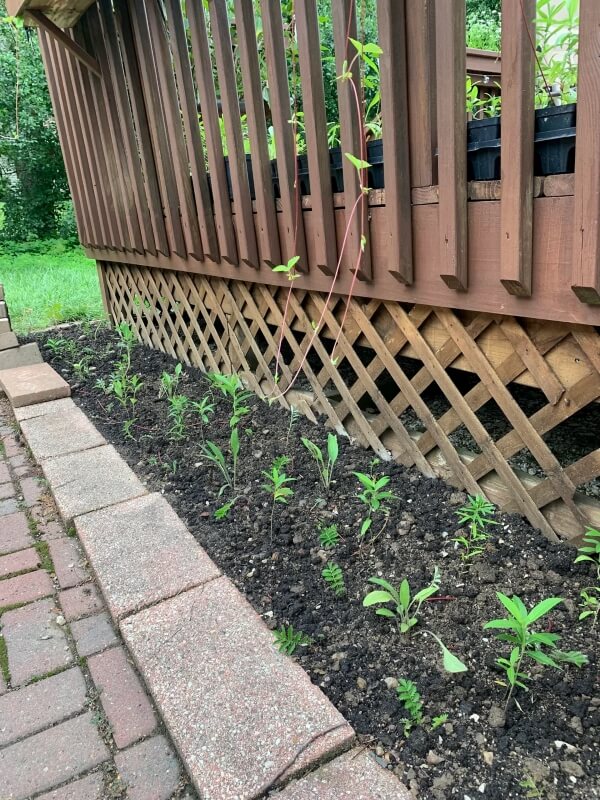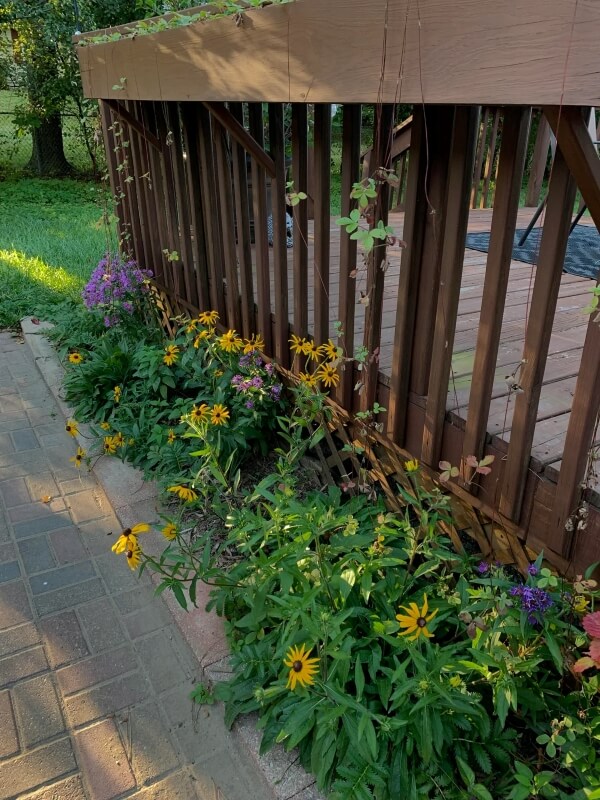One home gardener completely transformed a narrow decorative area bordering a deck, replacing a strip of small rocks with a lush assortment of native plants.
They shared their creation on the “r/NativePlantGardening” subreddit, garnering plenty of compliments from fellow gardeners.
 Photo Credit: Reddit
Photo Credit: Reddit
 Photo Credit: Reddit
Photo Credit: Reddit
“My mom let me replace this area of what used to be just small golf ball sized rocks at her place. These are all plants I grew from seed and collected from local parks,” the original poster shared.
A series of pictures depicts the OP’s progress, beginning with seedlings of various local native plants and moving on to a thriving patch of lush greenery and colorful flowers. Some of the native plants include common milkweed, butterfly milkweed, New England aster, wild petunias, and wild strawberries.
“Holy crap great job!! Very impressed that these are all sourced from around you. Its gonna look better each year, very exciting,” an envious commenter said. “Did you spend money on anything at all?”
The OP replied that the only expenditures were for dirt, mulch, and some supplies to craft DIY milk jug greenhouses for growing seeds.

Want to go solar but not sure who to trust? EnergySage has your back with free and transparent quotes from fully vetted providers that can help you save as much as $10k on installation.
To get started, just answer a few questions about your home — no phone number required. Within a day or two, EnergySage will email you the best local options for your needs, and their expert advisers can help you compare quotes and pick a winner.
DIY garden projects don’t need to cost much. For example, you can use toilet paper rolls for sustainable seedling transplanting pots instead of buying little plastic nursery pots from the gardening store.
The OP reused empty milk jugs to grow seeds collected for free from local plants, creating a patch of native plants that attract friendly pollinators, like the bees depicted in the OP’s pictures. Pollinators help support local ecosystems and protect the human food supply.
Native plants are suited to local weather conditions and slower-growing than invasive plant species. They have deep root systems that allow the plant to source water and nutrients from underground. This means you don’t have to spend a fortune on water bills to keep your garden thriving.
Planting native plants can form a dense ground cover that prevents invasive plant species and weeds from taking root. This reduces the need to weed or spray harmful pesticides, ensuring your plants or food are healthier and safer.
TCD Picks » Upway Spotlight
💡Upway makes it easy to find discounts of up to 60% on premium e-bike brands
If you’re looking for slower-growing and drought-resistant lawn-replacement alternatives to cut back on your yard work and water bills, consider replacing traditional turf with clover and buffalo grass, which require little to no mowing at all.
“They look fantastic, great job!” another user commented.
“That’s pretty awesome,” a third user wrote.
Join our free newsletter for easy tips to save more and waste less, and don’t miss this cool list of easy ways to help yourself while helping the planet.


Comments are closed.